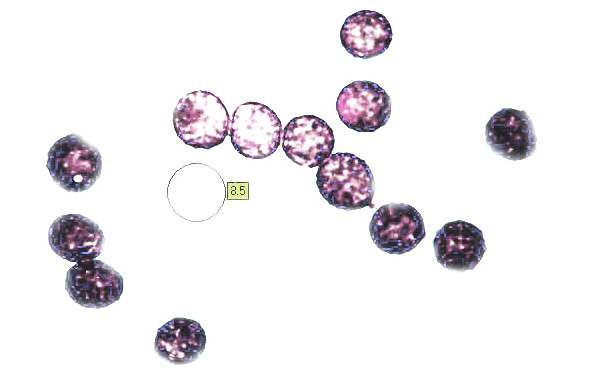Lactarius vellereus (Fr.) Fr. - Fleecy Milkcap
Phylum: Basidiomycota - Class: Agaricomycetes - Order: Russulales - Family: Russulaceae
Distribution - Taxonomic History - Etymology - Identification - Culinary Notes - Reference Sources
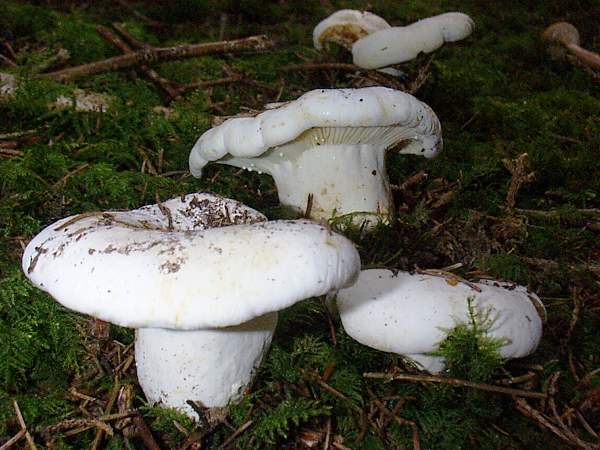
Commonly referred to as the Fleecy Milkcap, this very large mushroom occurs solitarily or in small scattered groups in broadleaf and mixed woodlands. By the time the caps are fully expanded, they are usually discoloured and split.
The thick white flesh is hard and has an acrid taste; this is rather surprising, because on its own the latex has a much milder taste. Despite its conveniently large size this species is therefore best treated as inedible.
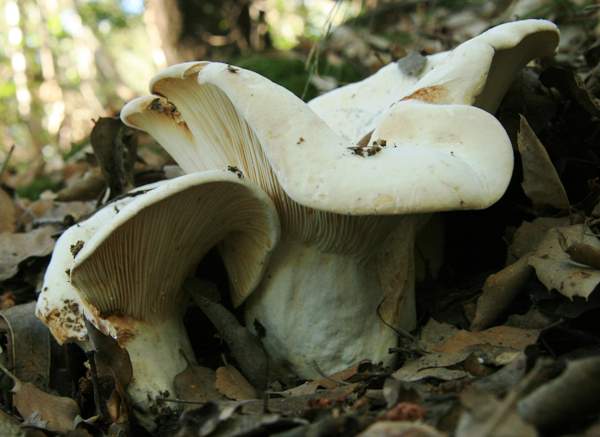
Distribution
Widespread and common in broadleaf and mixed woodlands throughout Britain and Ireland, where it usually fruits in vast numbers, this massive milkcap is found throughout Europe, from Scandinavia right down to the Mediterranean. I have not come across any recent references to this species occurring in North America.
The specimen above was under oak and birch trees on the edge of spruce woodland in Wales. Those of the left are under Cork Oaks in Portugal.
Taxonomic history
This mushroom was described in 1821 by the great Swedish mycologist Elias Magnus Fries, who gave it the binomial scientific name Agaricus vellereus. It was Fries himself who, in 1838, transferred this species to the genus Lactarius, thus establishing its currently-accepted common name Lactarius vellereus.
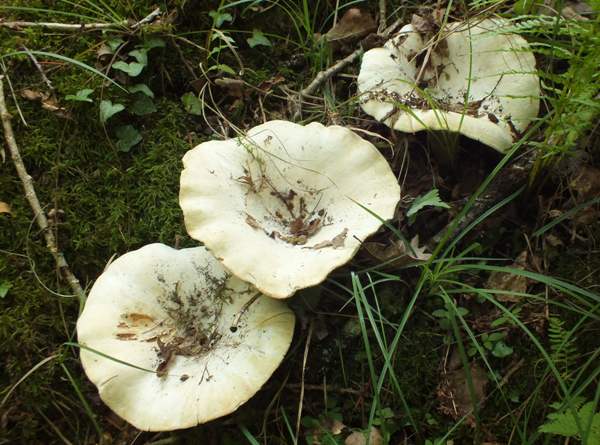
Synonyms of Lactarius vellereus include Agaricus vellereus Fr., Lactarius vellereus var. vellereus (Fr.) Fr., Lactarius velutinus Bertill., Lactarius vellereus var. velutinus (Bertill.) Bataille, and Lactarius albivellus Romagn.
Etymology
Lactarius, the generic name, is Latin and means producing milk (lactating) - a reference to the milky latex that is exuded from the gills of milkcap fungi when they are cut or torn.
The specific epithet vellereus also comes from Latin and means soft and fleecy (with a surface like very fine velvet).
In Britain this species is commonly referred to as the Fleecy Milkcap, but some people still write it as Fleecy Milk-cap, and in North America the form most often seen is Fleecy Milk Cap.
Identification guide
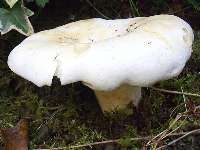 |
Cap10 to 25cm (exceptionally more than 30cm) in diameter, this is the largest milkcap that is commonly encountered in Britain and Ireland. The caps are at first convex but soon flatten and become centrally depressed. White at first, discolouring with yellow and eventually brown areas, the caps are covered in fine fleece-like fibres. |
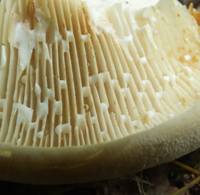 |
GillsDecurrent and moderately distant, the gills of the Fleecy Milkcap are initially white but soon discolour brown, often in irregular patches. When damaged, the gills exude abundant, mild-tasting white milk (latex). StemColoured much the same as the cap, the stem is cylindrical or tapers in slightly towards the base and is 2 to 4cm in diameter and 4 to 7cm long. |
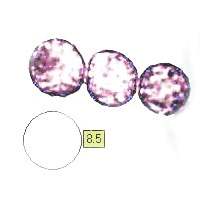 |
SporesBroadly ellipsoidal to subglobose, 7-10 x 5-7.5µm; ornamented with warts connected by an extensive network of ridges. Spore printWhite. |
Odour/taste |
No distinctive odour; the latex is mild but the flesh has an acrid taste. |
Habitat & Ecological role |
Mycorrhizal, in broadleaf and mixed woodland. |
Season |
August to October in Britain and Ireland. |
Similar species |
Lactarius piperatus is smaller and has more densely crowded gills; it has a very hot (peppery) taste. |
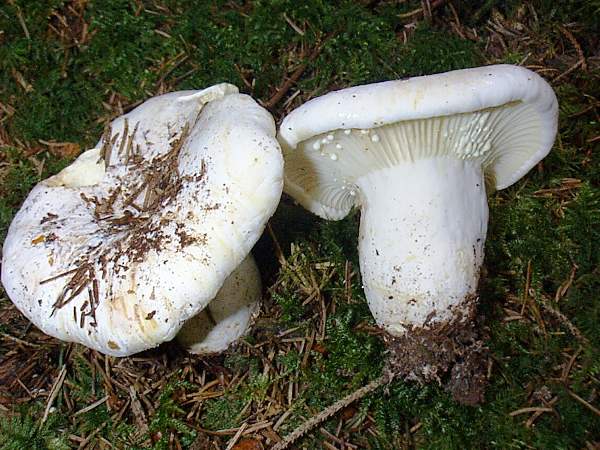
Culinary Notes
The thick white flesh of the Fleecy Milkcap is hard and has a very hot and acrid taste; this is rather surprising, because on its own the latex has a rather mild taste. Despite its conveniently large size, this mushroom is therefore best treated as inedible - a recommendation made in many field guides (but one that is studiously ignored in some parts of eastern Europe and Russia where hot peppery mushrooms are traditionally gathered for eating).
Reference Sources
Fascinated by Fungi, 2nd Edition, Pat O'Reilly 2016, reprinted by Coch-y-bonddu Books in 2022.
Funga Nordica, Henning Knudsen and Jan Vesterholt, 2008.
Fungi of Switzerland, volume 6: Russulaceae, Kränzlin, F.
BMS List of English Names for Fungi.
Dictionary of the Fungi; Paul M. Kirk, Paul F. Cannon, David W. Minter and J. A. Stalpers; CABI, 2008
Taxonomic history and synonym information on these pages is drawn from many sources but in particular from the British Mycological Society's GB Checklist of Fungi.
Fascinated by Fungi. Back by popular demand, Pat O'Reilly's best-selling 450-page hardback book is available now. The latest second edition was republished with a sparkling new cover design in September 2022 by Coch-y-Bonddu Books. Full details and copies are available from the publisher's online bookshop...
